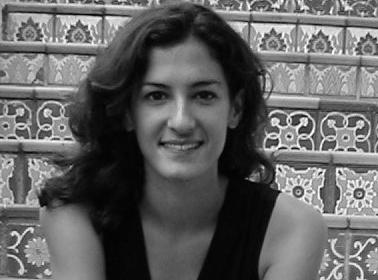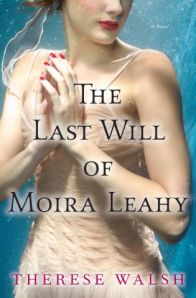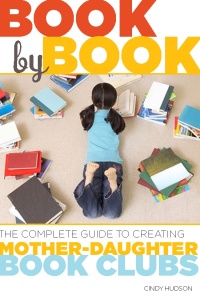When my book club with my daughter Madeleine read Light Years by Tammar Stein, the timing was great. The girls had been in high school for a year and were looking ahead to college. This story of a young woman who leaves her native Israel to attend college in the U.S. introduced them to the possibilities of what their lives would be like when they left home to go away to a university. The main character, Maya, is fleeing memories of her boyfriend killed by a suicide bomber and the guilt she feels that she may have been the one to push the bomber to his action. As the story takes place in Maya’s present and her past, we all learned a lot about life in Israel as well as on a college campus. We had a great discussion about cultural differences between our countries, the concept of spending two years in service to your country after high school, and finding a way to continue on with your life in the aftermath of personal tragedy.
I have not read Tammar’s other book High Dive, yet. But reading the publisher’s description made me add it to our possible choices for Catherine’s book club. Either way, I can’t wait to read it myself.
“Arden has a plane ticket to Sardinia to say goodbye to her family’s beloved vacation home after her father’s sudden death and her mother’s deployment to Iraq as an army nurse. Lonely for her father and petrified for her mother’s safety, Arden dreads her trip to the house in Sardinia—the only place that has truly felt like home to her. So when she meets a group of fun, carefree, and careless friends on their summer break, she decides to put off her trip and join them to sample the sights and culinary delights of Europe. Soon they are climbing the Eiffel Tower, taking in the French countryside on a train chugging toward the Alps, and gazing at Michelangelo’s David in Florence, all the while eating gelato and sipping cappuccino. Arden tries to forget about the danger her mom faces every day, to pretend she’s just like the rest of the girls, flirting with cute European guys and worried only about where to party next.
But the house in Sardinia beckons and she has to make a choice. Is Arden ready to jump off the high dive?”
Tammar graciously answered my questions by email from her home in Florida. Here’s my interview with her:
Can you tell us a little bit about your background and how you decided to become a writer?
TS: Basically, I love to read. I will read anything, anytime, anywhere. When I was in high school and trying to decide what I wanted to be when I grew up, I figured that I couldn’t be a reader and be paid for it. Being a novelist seemed like the next best thing.
I know you’ve lived in several countries and different states as well. Do you have one place you long to go back to and live there again?
TS: When I lived in Europe, after a couple of years I was very homesick. I missed the US and a lot of the cultural difference that I found cute when I arrived, I suddenly found very irritating. That’s when I knew it was time to come home. But now that I’ve been back in the States for seven years, I’m ready for a new international adventure.
What do you like about living in Florida, and do you think you’ll be on the move again anytime soon?
TS: I love Florida, especially now in November. The high is 82 today! From late October through late April is just amazing here. The orange trees are heavy with fruit and in February their blossoms fill the air the most amazing scent.
In Light Years, Maya leaves her native Israel after her boyfriend is killed by a suicide bomber to attend college in the U.S. How easy or difficult was it for you to write about two very different cultures?
TS: It was fun! People from different cultures will notice things that long time residents just take for granted. It’s very illuminated to talk with a foreigner, their different point of view and reference points can make you question the status quo. As a novelist, bringing in a stranger can help showcase things that otherwise would be awkward to bring up.
What do you see are some of the biggest cultural differences between life in the two countries?
TS: Well in some ways they’re very similar—progressive and Western. Israelis are more likely to speak their mind, there’s less polite lip-service. There’s a very strong culture of hospitality there, as well. If you’re ever invited to an Israeli’s home, you can count on a huge spread—more food that you can possibly eat and a lot of fussing over you.
In Israel, two years of service to the state after high school is mandatory. Do you think that idea would ever work here in the U.S.? What do you see as the biggest advantages and disadvantages of mandatory service?
TS: We all cherish the things we worked hardest for. Being forced to take care of your country, to give up your time and energy and really dedicate yourself to making your country a better, safer place will make people love their country more in the end. I also think that putting off college for 2 years is a good thing. A lot of people just aren’t ready for serious study and a break from high school is just the thing they need for perspective and maturity. The military teaches you discipline and leadership, both are needed qualities for success.
That said, I like the European model for mandatory service better. You can choose between going into the military or civil service: teaching in schools, working in hospitals, or national parks. The military really isn’t for everyone, this would give everyone a chance to go where they can really shine.
Maya is a strong, independent character in many ways. Do you see a lot of yourself in her?
TS: I don’t know. I think there’s something of me in every character—they came from my brain after all. Maybe the best way to think of it is that Maya is who I could have been if I had made different choices in my life. But so is Arden (from High Dive) and the two of them are very different.
What kind of research did you conduct for Light Years?
TS: I interviewed IDF members, particularly women. I visited Israel several times. And I read what I could get my hands on regarding Israeli/Palestinian relations, suicide bombers, and grief counseling.
Your second book, High Dive, also features a main character who doesn’t want to face tragic events in her life. What do you hope to convey to readers about moving beyond tragedy to create a life after an event?
TS: It’s a hard thing to do. That’s what I find so fascinating about it. Julia Glass once said that all great novels deal with the same thing: the heart in conflict with itself. I completely agree with that. How do you get over something traumatic? How do you forgive yourself? How do you trust in the future? Maya and Arden both stumble, making their way through those minefields. I think everyone has to find their own way, but friendship and love always help.
Is there anything else you’d like to say to MotherDaughter Book Club.com readers?
TS: Read! There’s nothing as wonderful as a good book, except a good book you can discuss with your loved ones.
Visit Tammar Stein’s website for more information about her and her books.







